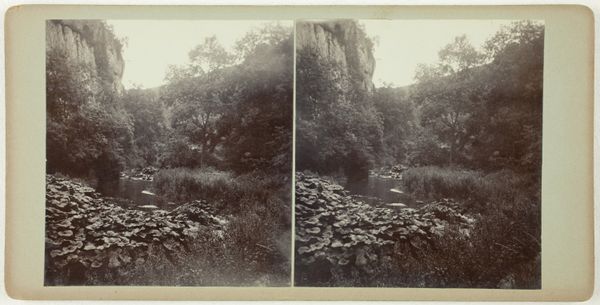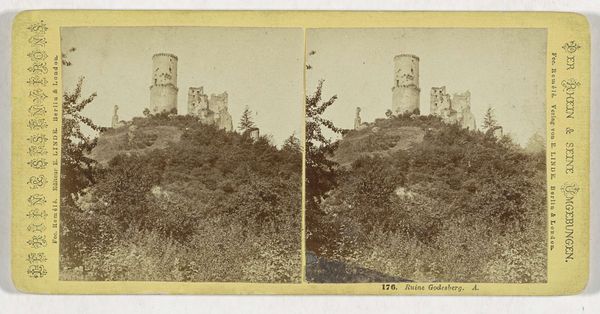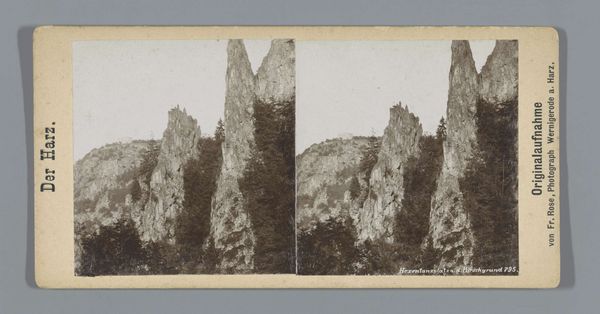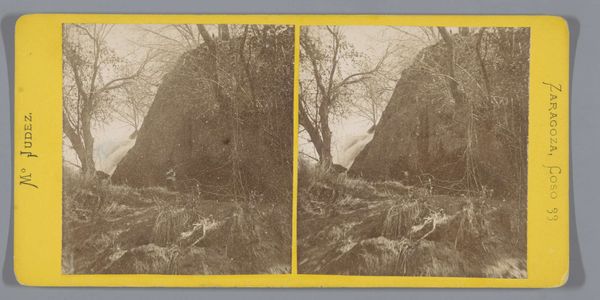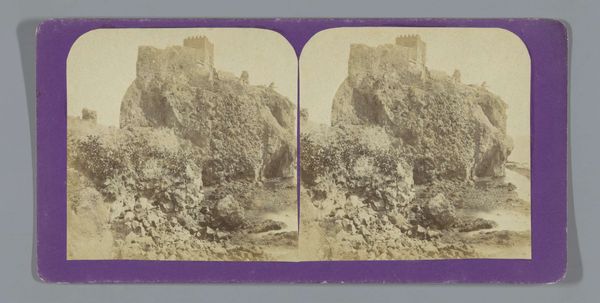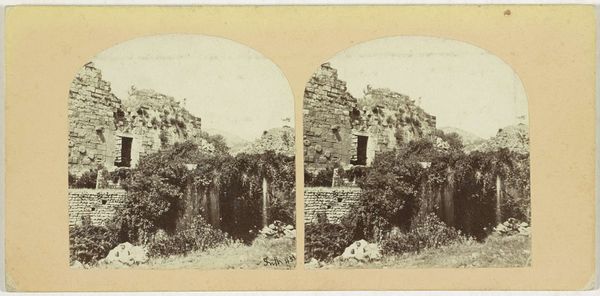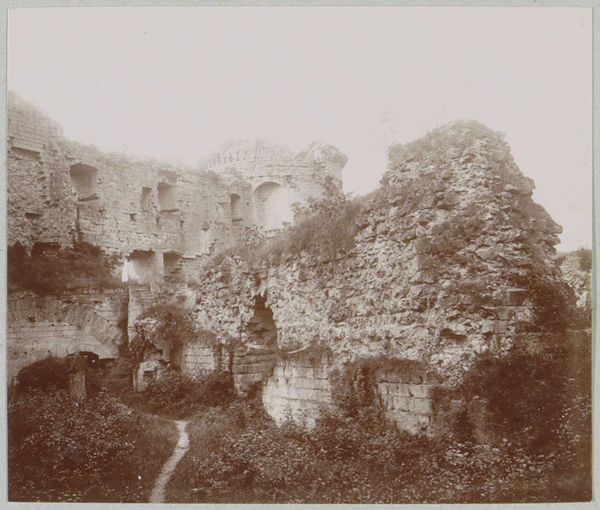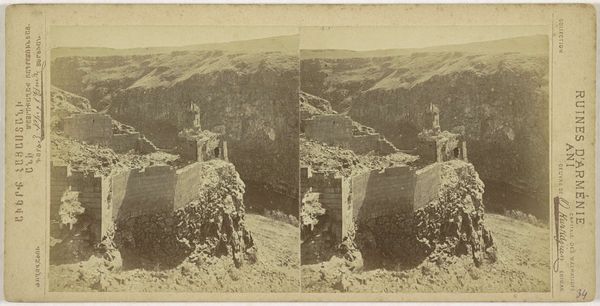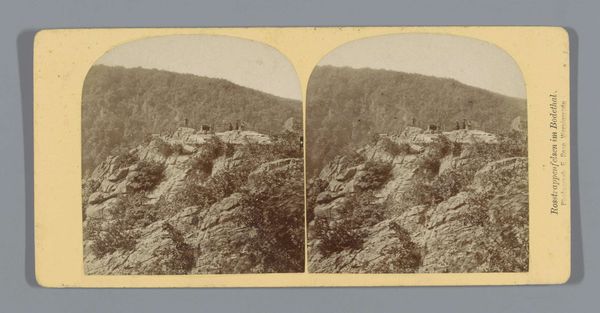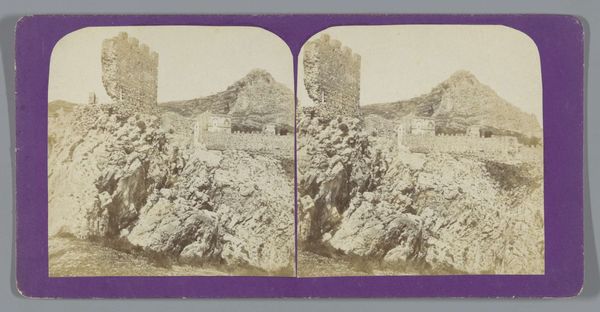
Dimensions: height 83 mm, width 169 mm
Copyright: Rijks Museum: Open Domain
Editor: Here we have "Kasteelruïne Lauenburg in de Harz" – Lauenburg Castle Ruins in the Harz – taken by Hermann Selle sometime between 1866 and 1870. It's a photograph that captures the romantic aesthetic with stark clarity. I find myself drawn to the starkness of the ruins against the wilderness; it’s very evocative. What strikes you most about it? Curator: Well, firstly, it’s important to remember the cultural moment. Photography was still relatively new. The interest in ruins was tied to a broader romantic movement, and rising nationalism. Photographs like this presented a palatable narrative. Think about it - what story might a German viewer in 1870 tell themselves when seeing a romantic ruin like this? Editor: I suppose they'd see a connection to their past. It looks imposing even as ruins. This makes me wonder, why photograph ruins in the first place? Is it about preserving history or is there something more at play? Curator: Precisely! The photograph allows people to see these ruins, not as simple decay, but as markers of cultural identity and resilience. Selle’s choice of composition— the stark contrast between light and shadow, the focus on the natural elements reclaiming the stone— amplifies that. Ruins became potent symbols for national narratives. What role did museums play in showing photos like these, and how do you think audiences were influenced? Editor: Museums, by showcasing these photographs, validated this narrative and framed the perception of history for a wider audience. This all seems like Selle captured a narrative, more than a simple image of a ruin. Thanks so much! Curator: Indeed. And, by recognizing that interplay between the image, the institution, and the viewer, we can grasp the complex historical forces shaping our understanding of art today.
Comments
No comments
Be the first to comment and join the conversation on the ultimate creative platform.

